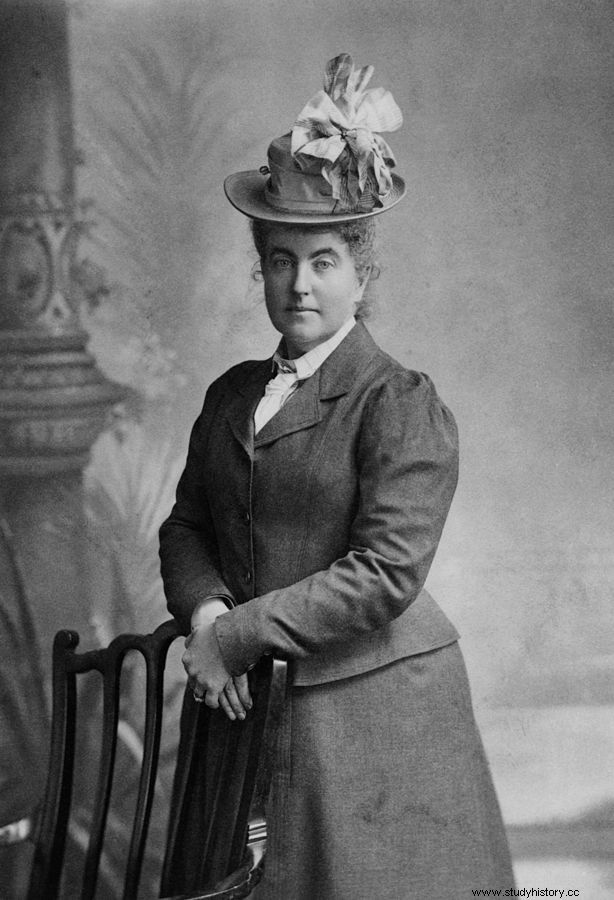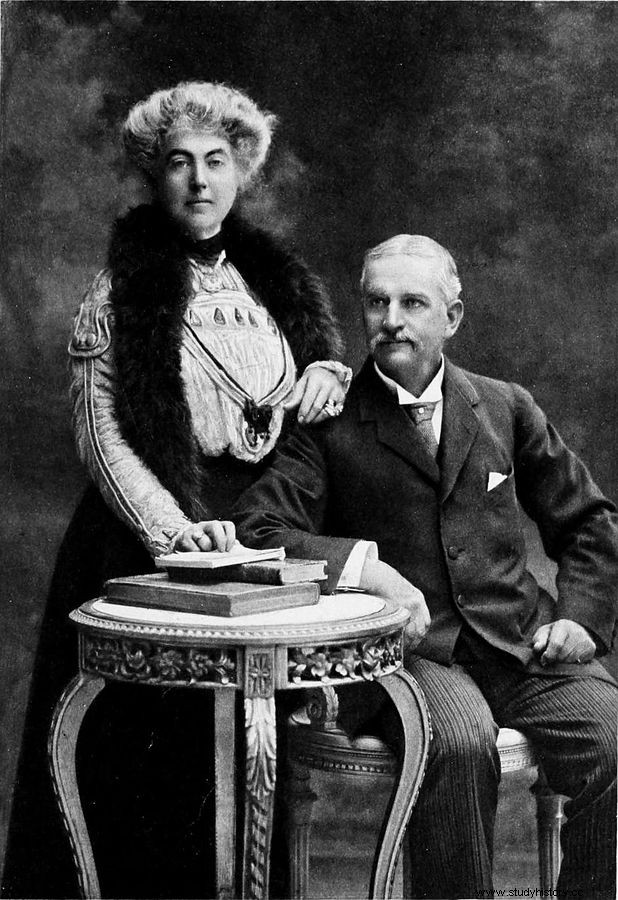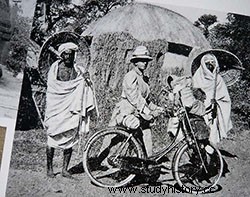American explorer and geographer, Fanny Bullock Workman (1859 – 1925) was one of the first professional female mountaineers. She sets several altitude records, writes about her exploits and travels, and campaigns for women's rights.
A privileged childhood

Daughter of Elvia Hazard and Alexander H. Bullock, businessman and governor of Massachusetts (United States), Fanny Bullock was born on January 8, 1859 in Worcester, into a wealthy and aristocratic family. The last of three children, she was brought up by governesses before attending the best schools for women, notably in New York. The fortune of her family also gave her the privilege of traveling in Europe, and Fanny stayed in France and Germany.
From childhood and adolescence, Fanny developed a taste for adventure, as evidenced by certain short and new stories that she wrote. She depicts aristocratic heroines escaping their obligations and discovering the world. It already shows an attention to the status and rights of women, a thirst for travel and a certain attraction for the world of mountaineering.
William Hunter Workman
Fanny returned to the United States in 1879. Three years later, she married William Hunter Workman, a man like her from a wealthy and aristocratic family. Twelve years her senior, William received medical training at Harvard. The year after their wedding, Fanny gave birth to a daughter whom the couple named Rachel. Their second child, Siegfried, will die in infancy.
It was William who introduced Fanny to mountaineering. Together they spent many summers in the White Mountains (New Hampshire), an Appalachian mountain range considered to be the steepest peaks in New England. There, she repeatedly climbed Mount Washington, which culminates at 1,916 meters above sea level. She also met other women mountaineers there; in the White Mountains, mountaineering clubs indeed encourage female practice rather than discourage it.

Travels around the world

Life in Massachusetts does not sit well with either Fanny or William, who both dream of living in Europe. After the death of their two fathers, the couple decided to settle in Germany. The couple's fortune – particularly linked to recent inheritances – and their contacts around the world greatly facilitate travel. Fanny does not intend to allow herself to be limited more than her husband by her status as wife and mother; for their travels, the couple entrusts their children to employees and schools. Like their mother before them, Rachel and Siegfried – before her untimely death – were raised by governesses.
Fanny and William embark on long journeys by bicycle in Switzerland, France, Italy, Spain, Algeria and then India. They drive thousands of miles and sleep where they can find shelter. During their expeditions, they practice mountaineering and Fanny is one of the first women to climb Mont Blanc. The couple also climb the Jungfrau and the Matterhorn, two other peaks over 4,000 meters high. They document each of their travels and Fanny writes in particular on the status of women in the places she passes through. Their books are well received.
The Himalayas and the Karakoram
After their bicycle trip through India, the couple embarked on an exploration of the Himalayas and Karakoram, a mountain range in present-day northern Pakistan. They experimented with mountaineering at high altitude, for which they both discovered a real passion. Drawing on their financial resources, the Workmans organized eight expeditions to this largely unexplored region over the next fourteen years.

With the assistance of guides and porters, in 1903 they climbed the Chogo (6,555 meters above sea level) and the Lungma (6,880 meters). Three years later, Fanny set a female altitude record by climbing Pinnacle Peak, a summit rising to 6,930 meters. Very competitive, she ardently defended this record and in particular against the mountaineer Annie Smith Peck who accomplished in 1908 the ascent of Huascarán (in Peru), which she believed to be 7,000 m high. Fanny will go so far as to pay a team from the Geographical Service of the French Army to measure the altitude of the mountain, in reality 6,768 m.
As during their bicycle trips, Fanny and William document their expeditions, map peaks, valleys and glaciers, photograph the landscapes they discover and relate the dangers and extreme conditions they face. They draw from it travel diaries and, later, conferences. Despite their accomplishments and their contributions to the knowledge of the region, Fanny and William struggle to stay on good terms with the locals, among whom they employ guides and porters. The cultural barrier between these wealthy Americans and the locals is significant, and the couple struggles to understand them.
After shipments

After 1912 and the start of the First World War, the Workmans stopped traveling in the Himalayas and settled in the south of France. Fanny and William travel around Europe giving talks about their expeditions and travels. Fanny is thus the first American woman to speak at the Sorbonne, and the second at the Royal Geographical Society British.
Fanny receives numerous medals of honor from European geographical and mountaineering societies. Demonstrating that a woman could climb the mountain as much as a man, she helps break down the gender barrier in mountaineering. In parallel with her exploration activities, Fanny supports women's rights and in particular the suffragette movement in favor of the right to vote.
Fanny Bullock Workman fell ill in 1917 and died in 1925, aged 66. William survived him until 1937.
